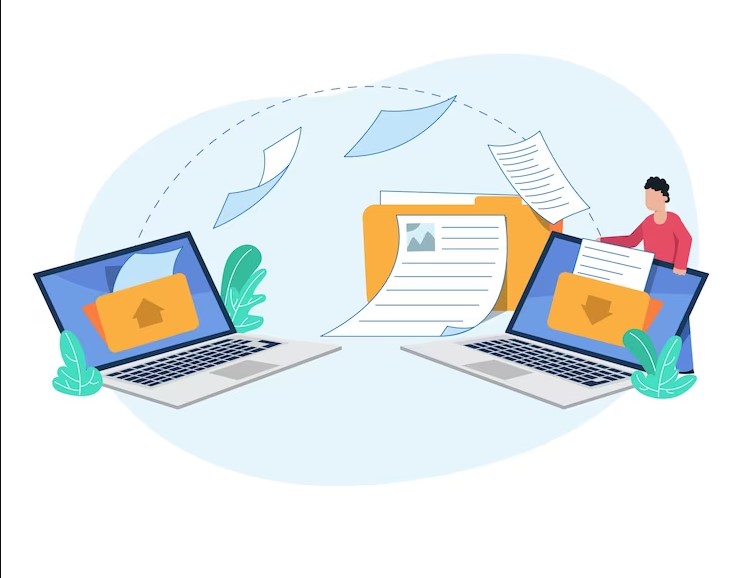In the rapidly evolving digital landscape, the need for preserving essential documents for the long term has become paramount. One key aspect of this process is the Outlook to PDF/A conversion, a method that ensures not only the longevity but also the integrity of your digital files. In this comprehensive guide, we delve into the intricacies of this conversion process, providing valuable insights and expert advice for individuals and organizations seeking to secure their digital documents for the future.
Outlook to PDF/A Conversion for Long-Term Preservation
Outlook to PDF/A conversion for long-term preservation is a critical process in the realm of digital document management. This method involves transforming Outlook emails and attachments into the PDF/A format, which is specifically designed for extended archival purposes. The primary goal of this conversion is to ensure the longevity, accessibility, and integrity of digital documents over an extended period.
Preserving documents in the PDF/A format goes beyond simple archiving. This specialized version of PDF is engineered to guarantee that documents remain accessible and readable for the long term. The conversion process safeguards against data corruption, providing a reliable means to reproduce documents in the future. By adopting Outlook to PDF/A conversion, individuals and organizations can contribute to the preservation of their valuable information in a standardized and secure format.
The steps involved in successful Outlook to PDF/A conversion are crucial for effective preservation. A comprehensive guide is essential, covering everything from selecting the right tools to understanding file compatibility. This ensures that the conversion process is not only seamless but also accessible to both beginners and those with technical expertise. The benefits of this conversion include enhanced document accessibility and increased data security, making it a pivotal aspect of ensuring the long-term viability of digital documents.
The Significance of PDF/A Format
The significance of the PDF/A format lies in its specialized design for long-term document preservation. Unlike standard PDFs, PDF/A is specifically tailored to ensure the longevity and integrity of digital documents over time. This format addresses the challenges associated with technological advancements, file format obsolescence, and potential data corruption that can occur in the fast-paced digital landscape.
One key aspect of the PDF/A format is its adherence to standardized specifications, ensuring uniformity and consistency across different files. This standardization contributes to the format’s reliability, making it a preferred choice for industries and organizations that require archived documents to remain accessible and unaltered for an extended period. By encapsulating all necessary elements, including fonts and images, within the document, PDF/A mitigates the risk of information loss or distortion over time.
Furthermore, the significance of the PDF/A format extends to its adaptability to diverse document types. Whether it’s textual content, images, or other multimedia elements, PDF/A can encapsulate and preserve them all in a single, standardized file. This adaptability makes PDF/A a versatile solution for various industries, reinforcing its importance in the broader context of digital document management and long-term preservation strategies.
Step-by-Step Guide to Outlook to PDF/A Conversion
Converting Outlook emails and attachments to PDF/A format is a straightforward process. Follow this comprehensive guide to ensure a seamless transition while preserving the longevity and integrity of your digital documents.
| Step | Description | Tips & Considerations |
| 1. | Select a Reliable Converter | Begin by choosing a trustworthy Outlook to PDF/A converter. Explore online tools or software solutions with positive user reviews and a track record of reliability. |
| 2. | Install and Configure the Tool | Download and install the selected converter on your system. Follow the installation instructions and configure the settings according to your preferences. |
| 3. | Launch Outlook and Open Emails | Open your Outlook application and select the emails or attachments you want to convert. Ensure that the content is organized and ready for the conversion process. |
| 4. | Initiate the Conversion Process | Within the converter tool, locate the option to convert Outlook files to PDF/A. Start the conversion process and wait for the tool to process the selected emails and attachments. |
| 5. | Review and Verify Output | Once the conversion is complete, review the output files. Verify that the PDF/A format has been applied and that the content remains intact, including images and formatting. |
| 6. | Save the Converted Files | Save the converted PDF/A files to a secure location on your system or cloud storage. Create a well-organized folder structure for easy retrieval in the future. |
| 7. | Backup and Archive Originals | Consider creating a backup of the original Outlook files before deletion. This provides an additional layer of security and ensures you have a copy of the unaltered documents if needed. |
By following these steps and considering the provided tips, you can efficiently convert Outlook emails and attachments to the PDF/A format, promoting effective long-term preservation of your digital documents.
Enhanced Document Accessibility
Ensuring that digital documents remain accessible is a paramount concern, and the Outlook to PDF/A conversion plays a pivotal role in enhancing document accessibility. Here’s how this process contributes to improved access to your valuable digital content:
- Compatibility Across Platforms:
- The PDF/A format ensures compatibility across various platforms and devices, allowing users to access documents seamlessly on different operating systems and devices.
- This universal compatibility eliminates the challenges associated with file format discrepancies, making the content readily available to a broader audience.
- Long-Term Readability:
- By converting Outlook files to PDF/A, you guarantee the long-term readability of your documents. The standardized format ensures that the content remains accessible even as technology evolves.
- This feature is particularly crucial for individuals and organizations dealing with archival documents, as it eliminates concerns about file obsolescence.
- Support for Assistive Technologies:
- PDF/A files support assistive technologies, such as screen readers, making digital content accessible to individuals with visual impairments.
- The commitment to inclusivity through enhanced accessibility aligns with evolving standards and promotes a more user-friendly experience for a diverse audience.
- Reduced Dependency on Specific Software:
- Unlike some proprietary formats, PDF/A reduces dependency on specific software or applications for document viewing.
- This independence ensures that recipients and collaborators can access the content without the need for specialized software, enhancing the overall accessibility of the documents.
- Preservation of Hyperlinks and Metadata:
- The Outlook to PDF/A conversion retains hyperlinks and metadata associated with the original content, maintaining the document’s integrity.
- Preserving these elements contributes to a seamless navigation experience, allowing users to follow references and access additional information embedded within the document.
In summary, the enhanced document accessibility resulting from the Outlook to PDF/A conversion ensures that your digital content remains not only preserved for the long term but also easily accessible to a diverse audience, fostering inclusivity and efficient information retrieval.
Increased Data Security
Increased data security is a crucial aspect of the Outlook to PDF/A conversion, providing a fortified shield for digital documents. This conversion process extends beyond preservation, incorporating security measures that safeguard sensitive information in the following ways:
- Encryption Capabilities: The Outlook to PDF/A conversion introduces encryption capabilities, allowing users to secure their documents with robust encryption algorithms. This added layer of protection ensures that only authorized individuals can access the content, mitigating the risk of unauthorized data breaches.
- Password Protection: PDF/A files resulting from the conversion process can be reinforced with password protection, restricting access to those with the designated password. This feature is particularly valuable for confidential emails or attachments, providing an extra level of security against unauthorized viewing or tampering.
- Prevention of Unauthorized Edits: PDF/A format, by its nature, discourages unauthorized edits. Once the Outlook files are converted, the content becomes read-only, preventing accidental or intentional alterations. This not only preserves the document’s original form but also adds a layer of security by reducing the risk of unauthorized modifications.
In conclusion, the increased data security resulting from the Outlook to PDF/A conversion not only preserves the longevity of digital documents but also fortifies them against potential threats. This commitment to data security is imperative for individuals and organizations seeking to maintain the confidentiality and integrity of their valuable digital content.
FAQs
How Does Outlook to PDF/A Conversion Ensure Long-Term Preservation?
Outlook to PDF/A conversion guarantees long-term preservation by transforming digital documents into a standardized, archivable format. This ensures document integrity and readability over an extended period.
Is Outlook to PDF/A Conversion Suitable for All Document Types?
Yes, Outlook to PDF/A conversion is versatile and can be applied to various document types, including emails, attachments, and other digital files.
Can Encrypted Outlook Files Be Converted to PDF/A?
Yes, encrypted Outlook files can undergo the conversion process to PDF/A format. However, it’s essential to ensure that decryption keys are securely stored for future access.
Are There Automated Tools for Outlook to PDF/A Conversion?
Yes, several automated tools facilitate the Outlook to PDF/A conversion, streamlining the process and minimizing the risk of errors.
Will Converted PDF/A Files Remain Accessible in the Future?
Yes, the PDF/A format is designed for long-term accessibility. Converted files will remain readable and accessible, ensuring document longevity.
Can Outlook to PDF/A Conversion be Reversed?
No, the Outlook to PDF/A conversion is a one-way process designed for permanent preservation. Reversing the conversion is not recommended.

